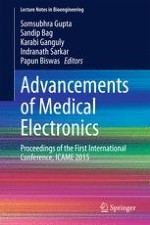The book is a collection of peer-reviewed scientific papers submitted by active researchers in the 1st International Conference on Advancements of Medical Electronics (ICAME2015). The conference is organized jointly by the Department of Biomedical Engineering and Electronics and Communication Engineering, JIS College of Engineering, West Bengal, India. The primary objective of the conference is to strengthen interdisciplinary research and its applications for the welfare of humanity. A galaxy of academicians, professionals, scientists, statesman and researchers from different parts of the country and abroad got together and shared their knowledge. The book presents research articles of medical image processing & analysis, biomedical instrumentation & measurements, DSP & clinical applications, embedded systems & its applications in healthcare. The book can be referred as a tool for further research.
